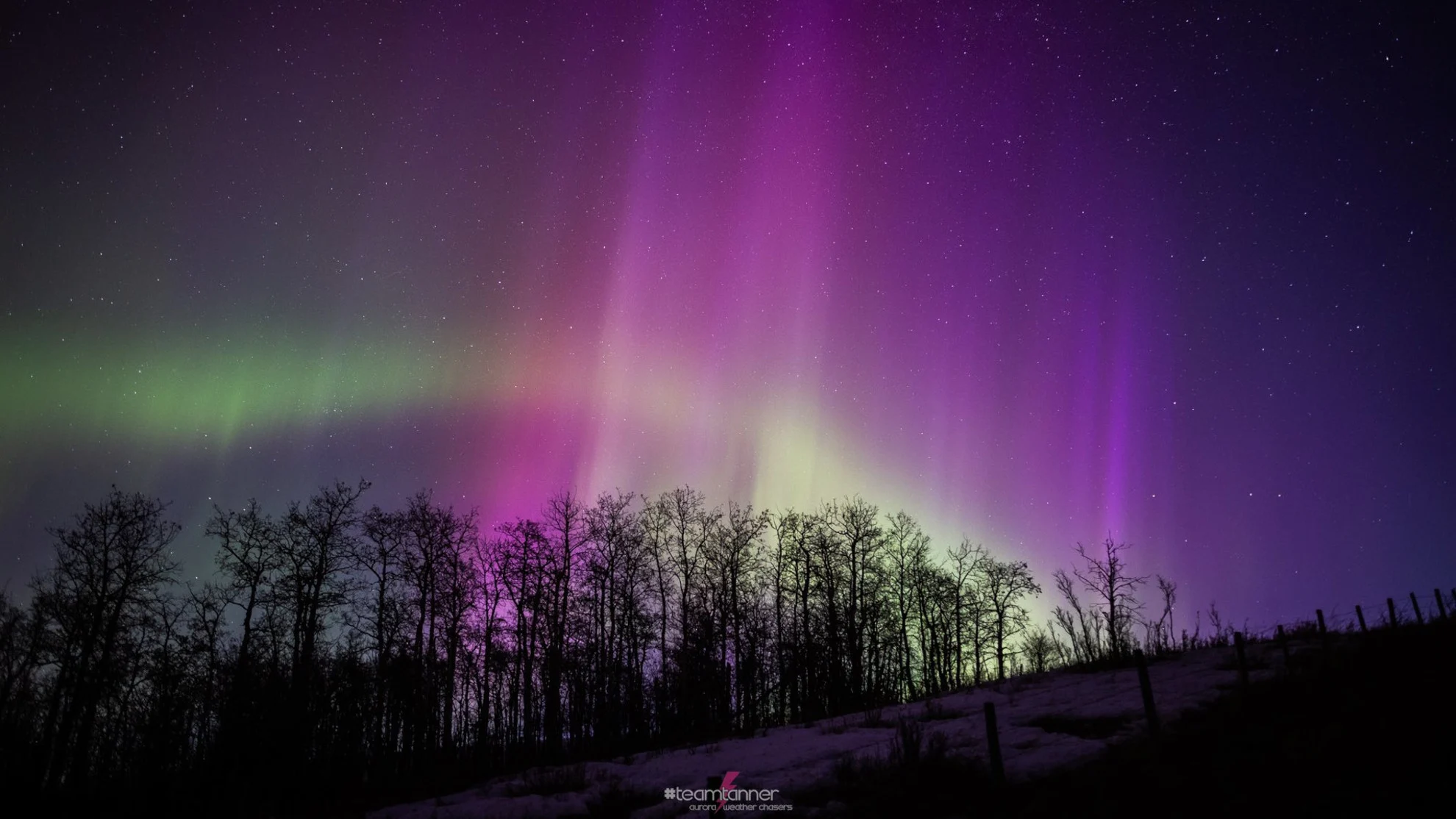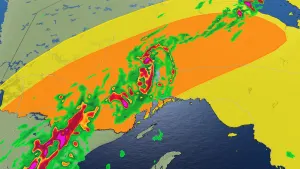
Look up! Bright auroras possible across Canada Friday night
This may be the first of several opportunities to see the auroras over the next few weeks.
The active sunspot region that sparked brilliant auroras around the world in early May is picking up right where it left off, and that could result in more auroras across Canada Friday night.
On May 10, 2024, an immense solar storm slammed into Earth's geomagnetic field, producing the strongest geomagnetic storm and the brightest and most expansive displays of the aurora borealis seen in over two decades.
After a roughly two-week hiatus on the other side of the Sun, the sunspot region responsible for this intense space weather, Active Region 3664 (AR3664), has rotated back onto the Earth-facing side of our star. Now renamed AR3697, the sunspot group isn't as big as when we saw it last, but it still packs a punch.
Starting around 10:37 a.m. EDT on Wednesday, AR3697 blasted out an exceptionally long duration X1.4-class solar flare, which lasted for more than an hour.

The X1.4-class solar flare from May 29 (left), and a closeup of AR3697 from the morning of May 30 (right). Sunspots are regions of tangled magnetic fields at the Sun's surface, which appear dark as they radiate more heat into space than the areas around them. (NASA SDO/Scott Sutherland)
Solar flares are explosions of energy, intense ultraviolet light and x-rays, that result from tangled magnetic fields at the Sun's surface suddenly and violently unravelling or reconnecting amongst themselves. X-class solar flares are the strongest type of flare the Sun produces.
On its first pass across the face of the Sun, as AR3664, this active region emitted nearly a dozen X-class flares. The last of these, just as the sunspot group was swinging out of view on May 14, reached X8.7-class. It was the strongest flare emitted so far by the Sun in solar cycle 25 and the most powerful flare since September 2017.
During its first X-class flare as AR3697, an immense coronal mass ejection — aka CME or solar storm — erupted from that same region of the Sun. It was captured by the NASA/ESA Solar and Heliospheric Observatory (SOHO).

Five frames captured by SOHO are overlapped here, starting at 14:36 UTC, just after the flare, showing it expanding out into space. Solar storms are immense clouds of charged solar particles that sweep out through the solar system. When one passes by Earth, these charged particles interact with the planet's magnetic field, causing a disturbance known as a geomagnetic storm, which can result in bright aurora displays. (NASA/ESA)
DON'T MISS: Once-in-a-lifetime northern lights dance across North American skies
According to NOAA's Space Weather Prediction Center, this CME is expected to reach Earth, scoring a glancing blow on the planet's geomagnetic field starting Friday afternoon, and continuing through Friday evening (Eastern Time).
As a result, they have issued a G2 (moderate) geomagnetic storm watch for Friday night into Saturday morning.

The green swath of colour on the above map represents the potential for spotting auroras overhead during Friday night's geomagnetic storm. The more intense the green colour is, the greater the possibility. Thus, northern regions of the eastern half of Canada will likely be favoured, while much of the prairies could be treated to aurora displays that night.
The two solid lines that arc across the map denote the southernmost visibility of the auroras (where they will likely be seen along the northern horizon) — light blue for low solar activity (aka "sub-storm"), and yellow for during a moderate geomagnetic storm.
The brightness and extent of Friday night's aurora activity is not expected to reach the same levels as what occurred on the night of May 10. However, it is possible for much of Canada to see them throughout the night.
READ MORE: Strongest solar flare since 2017 just blasted out from the Sun
Cloudy or clear skies?
Having a clear sky is very important for aurora watching, as a thick layer of cloud will completely obscure our view of this phenomenon.

For the best chance to see the auroras, get far away from urban light pollution, to view from under the darkest sky possible.
Thumbnail courtesy Tree and Dar Tanner, of TeamTanner Aurora and Weather Chasers, who photograph both space weather and Earth weather from central Alberta. They captured this image during the March 23, 2023 solar storm.










